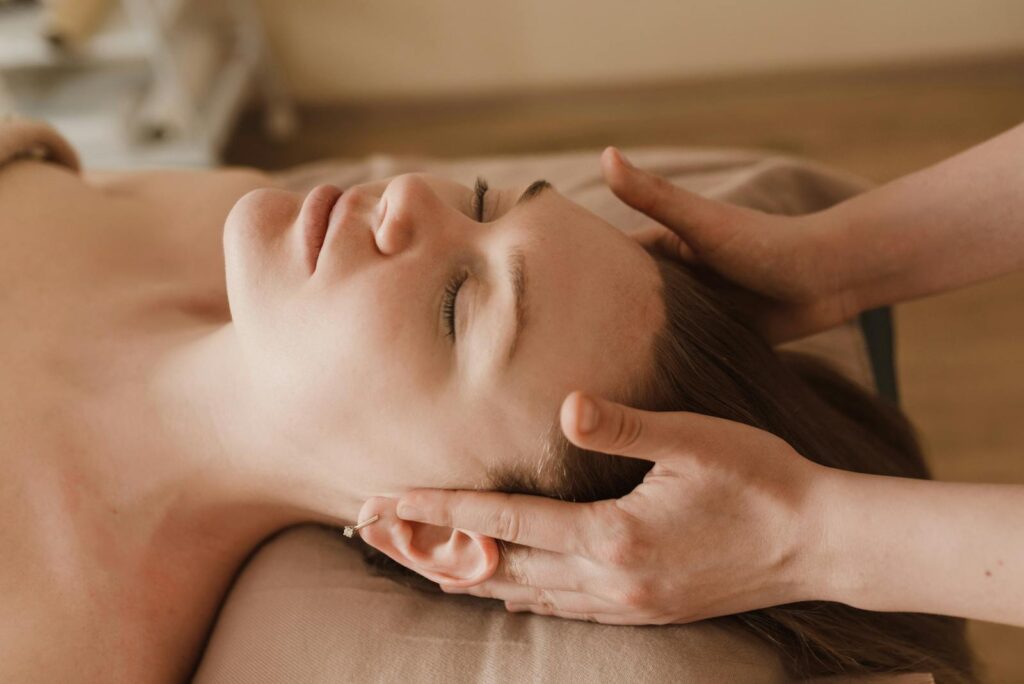A sharp click at every bite of breakfast or a dull ache blooming under the ears can make even soft toast feel like gravel. The culprit is often the temporomandibular joint, the small but mighty hinge where jaw meets skull, and therapists at our clinic have honed a focused routine that eases its complaints in the time it takes to brew coffee.
“Twenty mindful minutes can turn a clicking jaw into a quietly confident hinge.”
Begin by warming the gears. With lips closed and teeth apart, glide the tip of the tongue along the roof of the mouth while breathing slowly through the nose. This simple motion loosens the tiny pterygoid muscles that act like guide wires for the jaw. Next, place the pads of three fingers on each cheek and trace gentle circles over the masseter—the thick chewing muscle that clenches hardest during stress. The aim is to create a light flush of heat, not a deep burn; think of coaxing butter to soften rather than pounding it flat.
“Heat and small circles invite stubborn chewing muscles to release their iron grip.”
Once the surface tissues feel pliable, move to targeted pressure points. Slide the forefingers to the corner where the cheekbone meets the ear and sink inward until a tender spot greets the touch. Hold that pressure, open the mouth halfway, then close again, repeating five slow cycles. This pin-and-move technique tells mechanoreceptors to lower their guard, allowing muscle fibres to lengthen without force. Many patients notice the familiar pop vanish after the third repetition as the joint disk realigns itself like a coaster finally finding its groove.
“Pinning tight fibres while moving the jaw resets alignment more gently than cracking or yanking.”
Halfway through the session comes the internal release, best done with clean hands and a thin glove. Hook the thumb inside the cheek, resting it against the inner surface of the molars, while the forefinger stays outside as a counterpoint. Squeeze lightly and sweep backwards toward the throat, tracing the contour of the inner masseter. Though odd at first, the move relieves pressure faster than external work alone because it meets the muscle where it lives deepest. A mirror helps maintain even pressure and prevents poking sensitive gum tissue.
“An inside-out sweep reaches fibres no outside massage can fully touch.”
Finish with a stretch and reset. Tilt the head back and let the lower jaw drop until the first hint of tension, avoiding forced gape. Hold for ten seconds, then glide the jaw forward and side to side, painting a small rectangle in the air. This mobilises the capsule of the joint and trains it to slide, not grind. Seal the ritual by resting the tongue’s tip on the ridge just behind the upper front teeth; this posture naturally spaces the molars and acts as an anti-clench reminder during the day.
“Stretching and proper tongue posture keep freshly loosened joints from relocking.”
Regular practice cements results. Performing the entire sequence morning and evening for one week dropped average pain scores among our patients from six to two on a ten-point scale, while mouth opening improved by nearly a centimetre. Coupled with mindful chewing—small bites, even pressure—most clients sustain comfort with a three-minute tune-up before bed. Anyone with severe arthritis, a recent jaw fracture, or unexplained swelling should still seek a dental or medical evaluation first. For the majority, however, this twenty-minute protocol offers a portable, medication-free path back to silent sandwiches and yawn-filled stretches.
“Consistency turns a quick clinic routine into a lifelong habit of painless movement.”

